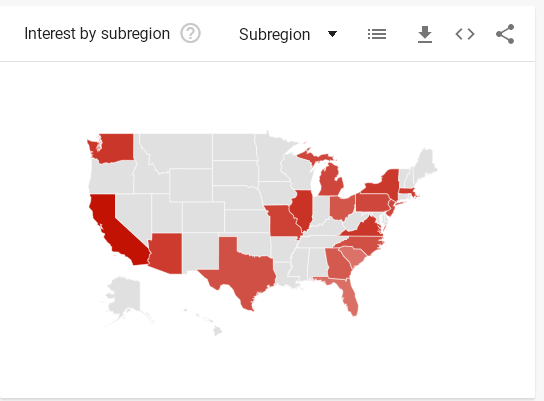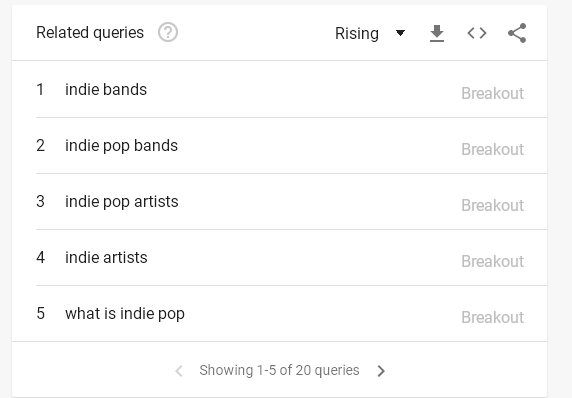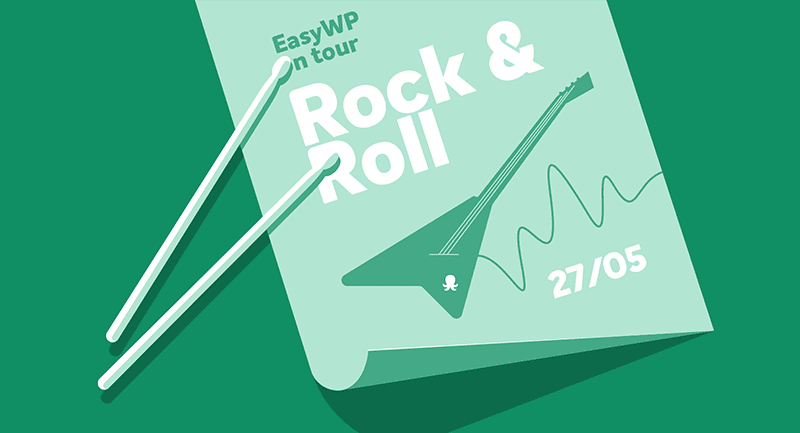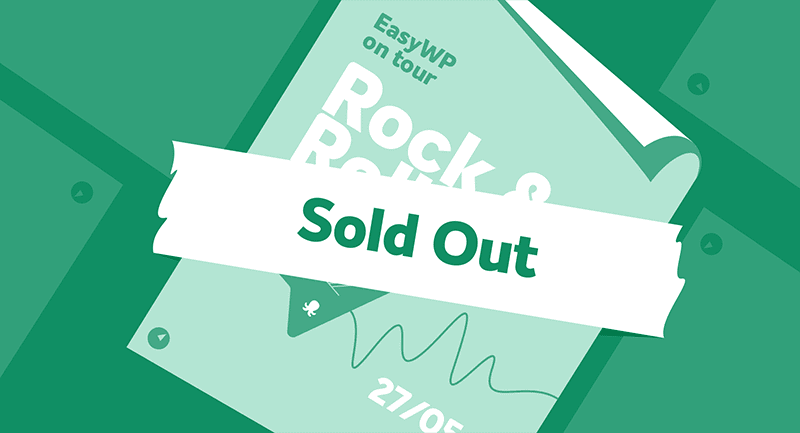Finding Your WordPress Blog Audience: A Step-by-Step Guide to Growth


Struggling to find your audience with your WordPress blog? Learn proven strategies to identify your target readers, create content that resonates, and build a thriving community around your niche.
You’re truly excited! You’ve set up a blog on WordPress. You did everything right.
- You have a simple but beautiful theme.
- You have created an excellent piece of content.
- You included both text and images.
- You optimized everything until late at night.
You hit publish and go to sleep…
… the next day you wake up to find out how your content actually performed giddy with anticipation and then you look at what happened: nothing!
- No pings from other blogs
- No comments
- No social media shares
You scramble for your analytics tool of choice just to realize that almost nobody visited your hand-crafted masterpiece! Is this possible?
- You check whether your blog is up.
- You test whether the sharing buttons work.
- You even copy and paste the link to see whether it fits into a text-only mail message…
Everything you did was correctly implemented. WTH happened then? Why did nobody notice the post?
You just forgot about the audience! A blog is like a cinema in a way. When you show a movie but do not announce it beforehand you risk getting no audience at all. You probably lack a so-called content strategy or you have a one without knowing it.
The Default Content Strategy of Blogging Beginners
The most common content strategy for beginning bloggers these days is still “just create great content and they will come“. It gets harder and harder to make that work.
In a crowded content market, those blogs that have a more nuanced approach tend to be more likely to succeed. Why not just build a great audience and they will come instead? When there is no audience yet assuming that just the sheer existence of your great content will draw crowds is illogical to say the least. It’s audience first and content second!
To get a matching audience you have to know what kind of audience you prefer. Imagine yourself to be a rock star. What kind of genre would you play?
- Classic rock
- Indie pop
- Hip hop
or something different completely? You have to know upfront. When it comes to blogging it’s called a niche.
Playing classic rock to hip hop fans won’t work in most cases unless you do it like Run DMC and Aerosmith. As a rule of thumb, it’s much easier to play rock to a rock audience – Captain Obvious strikes again!
First, you have to find out what your genre or niche is, then you create the type of content this audience wants. Search engine optimizers call that process market and keyword research. Below are screenshots from Google Trends.

Even if you do not “market” anything, strictly speaking, you compete with other venues for attention. There are many tools that help you find an audience. Try
Just make sure not to create exactly the same content everybody else did before you. The audience might be saturated already with that.

Once you know your audience in general and have a preferred one for your blog as a whole and for the post, in particular, you still do not “just create great content and they will come”. You ensure that you have an audience and can notify it early on.
How to Build an Audience Early on?

Building an audience is the prerequisite to making them appear on your site. You also need to tell the audience first or at least have ways to tell them once your content goes live. A movie or rock star would have plastered the city with posters of their concert. What about a blogger? What can bloggers actually do?
- network in real life
- comment on other blogs
- socialize on social media
- “build a list”
Luckily blog content can stay published for a while, unlike a movie that starts and ends at a given time, or even more so a rock concert that usually can’t even get repeated in the same place twice.
Network in Real Life
Before the Internet people actually met face to face! You may be not old enough to remember. Some of those traditionalists still meet other people for networking purposes as if Facebook has never been invented. Yeah, I know. It’s weird! They even do it despite owning smartphones!
Imagine that! You have to look at other people, you have to listen and can’t skip their long-winded sentences. You have to smile for a while instead of just sending an emoji.
How inefficient! Yet it still works. Somewhere it’s in our human nature. Maybe it’s even older than that. Primates socialize as well. They do it even more excessively.
Even though you can network with more people at the same time online, the real-life connections you foster are still much stronger and more reliable than those volatile ones between avatars on social media or messaging apps. It probably has something to do with
- pheromones
- body language
- social status symbols
only scientists can explain properly. Yet meeting people even just for business purposes is fun!
You can make friends and sometimes mere eye contact is enough to know that someone is likeable. You can’t have that on most social tools even when using video. You never know when the other person is looking at you or when they are actually looking up a travel website for their next vacation while they “listen” to you.
But you will remember a person you met at a party, trade fair, or conference. It also makes it you much likelier to listen to, agree and share their content. You only need of few such supporters who actually have some attention left for you to get the ball rolling when you publish content. The friends of your friends may share as when the content rocks, and when you’re lucky your own audience will grow over time.
Real life networking is great to foster relationships but won’t suffice of course. You can’t ignore most other people online because when you don’t care for them they don’t care for you either. Real life networking is a good start but has to be part of a bigger sharing strategy.
It’s not just about promotion of course. You also need to remember that. Nobody likes sharing stuff from selfish people. It’s always about give and take.
Comment on Other Blogs
Do you remember the good old days? It was great to be part of the early blogging craze! It was the time when blogs were still something new and the few blogs that existed were written by a tight-knit community of bloggers called the blogosphere. The number one method to get others to notice and promote your blog was to simply comment on other people’s blogs. No joke!
You just had to be around and add something of value inside the comment section of already popular blogs. Comments were often almost as prominent as the posts itself.
Often crucial information was added in the comments first so that bloggers would update their posts based on the feedback. In other cases, comments would spawn new blog posts based on the suggestions for the commenters.
One way or the other – even in case your comments were just that, mere comments, people would read them and visit your blog. The owners of the blogs you commented on would check out your weblog and their most active readers would also want to find out who’s behind the most insightful, intriguing or simply interesting comments.
In the best case, a comment on some other blogs would results in a link to yours – ideally to a post that would elaborate on that topic. To speed up that process you could also simple link first and thus automatically send a “ping” to the original source.
With pings, you would both comment on your own blog and get a link back to it. This feature was one of the major reasons why WordPress blogs spread so far. Everybody wanted to be a part of this informal community and get some traction that way.
At the end of the day, you would get people to your blog one way or another simply by joining debates or adding your unique point of view.
Commenting is the classic way to build an audience for blogs but does not work that well anymore. How comes? Don’t we have many more blogs now to comment on? Sadly for various reasons blog commenting is not the best option anymore. Some of the reasons for the decline of comments are:
- social media – most people comment on third-party sites or just “like” or share instead of taking great lengths to fill out a whole form and to add a comment
- SPAM – automated comments and pings are the norm today as humans rarely comment in contrast to bots
- abuse – low-value comments like “thank you, great post” have taken over
- comments closed – many blogs do not allow commenting at all anymore for different reasons others close them quickly on older posts
Commenting still can be a powerful way to foster connections among bloggers and to grow your audience when you do it right. Yet most people don’t. They are simply too busy and too self-promotional. When are you genuinely interested in an honest conversation and not just to get people back to your site then it should still work for you.
Socialize on Social Media
Most people spend most of their time on just a few websites. Don’t believe it? Check out usage statistics. The likes of
- YouTube
have dominated the daily habits of most Internet users measured by time on a given site. It’s often hours per day on a single service!
The original “social media” like blogs, forums or even mailing lists (discussion lists not newsletters) have been gradually replaced over the years by different waves of social networking tools. Instant messengers seem to dominate the space now but as they are very hard to measure we do not even know for sure.
In any case, the talk of the town takes place on social media platforms of all kinds. You are either part of those conversations or you are not even really there. When you fail to respond or make sure to highlight the desirable mentions of you and your blog people will be less likely to promote your work in the future. When you ignore people they will ignore you too. When you embrace people, they will embrace you as well.
Over the years marketers tried to increasingly game the system by simply using social media like
- newspapers
- TV
- radio
they would broadcast and repeat their messages without engaging actual audiences. That’s a bit like responding to phone calls only by using an answering machine instead of communicating.
Both people and algorithms got starter over time though. Automated sharing gets ignored most of the time unlike you really make it look like it’s real. Otherwise, sites like Facebook or Twitter will simply demote the redundant messages or even ban your account in the worst case.
When you are engaging in the conversation like a real human being does both people and algorithms reward it. After all that’s what social media is all about. When you socialize and respond to the “social media phone” people are rather likely to connect with you and read your blog.
Many people still read blogs because they like the person behind it. They are not only looking for the content or topics they are interested in they are also drawn in by a particular writing style and even opinions that are expressed by the blogger. This is the truer the more subjective a topic is. Politics is an obvious example. Depending on how you depict the issues a particular type of reader and thus audience will read it.
It’s more difficult now to socialize on social media but it’s still obligatory. Why that? Doesn’t it suffice to respond to comments on your own site? When you don’t respond you are viewed as simply rude or negligent.
Social media management is booming in recent years as more and more companies realize they can’t ignore feedback and just rely on others to spread the word about them.
For blogs, it’s also still paramount to have a social media presence. Yet you can’t rely on it anymore. The algorithms are throttling your reach and it’s often almost impossible to get noticed anyway among all the clamor. Find a common-sense middle ground of being responsive and not working all day for third-party sites.
“Build a List”
At first blogs were meant to replace newsletters! You won’t believe what happened next! Now newsletters are still the best way to build an audience on blogs! Yeah, we have feeds –
- RSS
- RDF
- Atom
are the awkward names that never really reached the masses – and the likes of Feedly still handle them pretty well.
Website notifications in your browser have been the next big thing but marketers quickly managed to annoy everybody and their aunt using those so that some browser already block them out of the box.
By now it’s still or again email that is both used by the majority of people online and is also effective in making an audience return to your site. For blogs “building a list” is one of the most important blogging success factor a recent survey shows:
“Bloggers who earn over $50,000 per year from their blogs are over twice as likely to focus on getting email subscribers as lower-income bloggers are.”
On the other hand, we all know how annoying pop-up forms that ask for your email address are and how many of those we
- block
- ignore
- close
per day. Sometimes we even have to leave sites because of all the obnoxious forms opening everywhere suddenly. There is a simple but effective solution for making visitors subscribe to your blog by mail without ostracizing your potential audience up front: just build your blog or site with subscribers in mind from the start.
The number one design element is a large form input and call to action button on top of your site asking for a mail address in exchange for [insert your value proposition here]. Ideally, you build up the anticipation even before the blog goes live and spread the word about your upcoming blog to existing audiences be it yours or other people’s audiences.
When you have that form input on top and it’s part of the actual design without harming the user experience you are much more likely to get subscribers without ostracizing the majority of visitors.
People who are new to the site will notice your value proposition and call to action on their first visit because they have to scroll to view the content. Regular visitors know that they have to scroll and do it out of habit. Some may also subscribe later on. Not everybody kisses on their first date!
Email marketing works best for audience building but is also very resource intensive. Do not underestimate the actual effort of the by now proverbial “list building”. It can easily be half of all your time and money spent on your blog! When you are just one person a single-author blog is already pretty resource intensive. Add to it the constant need for email updates and the blog tweaks to get those subscribers in the first place and you get the point!
Some bloggers have even given up their blogs and solely focused on their respective newsletters. There are of course ways to combine both – for example tools like Jetpack that let people subscribe to your blog by mail without having to create a separate newsletter and subscriber list – but there are caveats.
How to Build an Audience When it’s Already Late

“OMG! I didn’t do any of those”! You exclaim? Don’t fret. The game is not over yet. Of course, you can still do the things explained above – they are an ongoing process – your audience is never static.
Some people lose interest while you can always win over new ones. On the other hand, it’s a bit late now. You have created and published the content but you show the movie in front of an audience full of empty seats. What now?
You can either do one or all of the above for your future posts or you can resort to these “better late than never” workarounds:
- create content consistently
- tap into existing audiences
- buy ads from gatekeepers
You can create content consistently, be it daily, weekly or monthly, depending on what type of expectations you set: are you rather publishing a daily newspaper, a weekly or a monthly magazine? This way you can encourage people to return on the next day, Monday or first of the month.
Ideally, you stick to your schedule then and do not disappoint those who reappear diligently on time. This is a slow but surefire way to grow an audience. After all, most people are creatures of habit! Once they get used to something they do it again and again until something really earth-shattering happens.
Tapping into existing audiences is the perhaps most common way to popularize blogs after they are already live. Many people use guest posting or guest blogging for that even though the technique got overused by now. It’s important not just to focus on search traffic here as many blogs add “nofollow” to links from such posts. Try to find popular blogs that already get many visitors. Then reach out to the people who run them. First make a good impression though. Do not beg for attention without being there for a while.
Another method is to add expert opinions or advice into your posts and ping those influencers once the post is live. It doesn’t have to be a whole list of 50 experts on x or y. Adding a few expert quotes to regular posts can sometimes suffice to break the sound barrier of the noisy Web. The Content King Academy is a prime example of that!
A popular method for getting search traffic is looking for already successful posts and to create similar but better ones – it’s called the skyscraper technique. Just make sure that your content piece is bigger and better than the existing ones.
The man who coined the term and invented that technique – the famous Brian Dean of Backlinko – stresses that:
“There are WAY too many people in internet marketing today that think ‘great content’ is enough.”
Instead of relying on good luck to get visitors to your blog he relies on very specific content pieces devised to outperform existing ones that were already ranking well on Google.
Buying ads from gatekeepers like Google or Facebook should be the last resort for the successful blogger. After all, it means you are not successful enough by itself when you need to buy access to eyeballs of strangers. Sure – algorithms are by now capable of showing your ads to the exact people who really care about the topics you cover – but it’s often not a good start when you need to pay for attention.
People trust content that needs to get advertised much less. They ask… Why do they buy ads? Isn’t their content good enough to find its way to me organically?
When buying ads try to keep those users!
- Encourage them to sign up to your newsletter
- engage and involve them on social media
- respond to their comments and feature requests
and even connect with them in person whenever they appear on your blog for the first time. Treat them courteously like any new visitor, but go the extra mile to welcome those who you know are already interested in your topic and part of your demographic!
